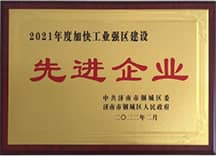Effect of HPMC for Film Coating Solutions
Aqueous film coating techniques are of current interest in pharmaceutical industry. This technology has precedents in both paints and adhesives technology. It is a field of applied science such as polymer, surface, mechanics, and rheological sciences. The quality of coating depends on film coating materials. Therefore, much effort have been devoted to study the solubility, permeability, mechanical and rheological properties of films, made of different film coating materials. Studies on pharmaceutical film coatings have often examined mechanical properties of free films prepared by casting or spraying techniques. The rheological properties of coating solutions are important in film coating process because of their effects on spraying, atomization,spreading, and penetration stage (4). Aulton and coworkers have studied the elastic, plastic and viscoelastic properties of HPMC films by indentation method (1). The effects of film preparation methods (cast and sprayed films) were studied by Obara and coworkers (2). The water vapor transmission and mechanical properties (puncture strength and % elongation) of the films were investigated as a function of the polymer type and viscosity, plasticizer type and concentration (3). The purpose of this investigation was to examine the effects of polymer grades and plasticizer molecular weight on viscoelastic behavior of coating solutions.
Results and Discussion Effect of HPMC gradesLoss tangent of different grades of HPMC (E5, E15 and E50) was plotted against ω. These results show that the loss tangent increases to ω = 6.25 (viscous properties) and then decreases at high frequency for HPMC E50. HPMC E5 shows that loss tangent decreases in this frequency apparently due to its less viscosity in all temperatures except 60°C (Figure 1). This temperature is more than HPMC thermal gelling point (=52°C), therefore precipitation occurs and the system shows higher viscosity and higher loss tangent. The difference between behavior of 15% (w/v) solutions of E5 and E15 is less than that can beobserved in E5 and E50 solutions, because of relatively equal molecular weights (Figure 2). By using a mechanical model made up from a combination of spring (elastic elements) and dashpots (viscous elements), the behavior of coating solutions under oscillation could be best understood. At high frequency, the springs can elongate and contract under imposed shear but the dashpots have very little time to move (5). The system, therefore, behaves essentially as an elastic solid of modulus G. At low frequency, the springs can also extend but in this case the dashpots have ample time to move and their extension greatly exceed that for the springs.
The system therefore behaves essentially as a viscous fluid of viscosity η.Effect of HPMC concentration According to the rheological data and closeness to real condition in film coating process, T = 40°C, ω = 6.25 and f = 1 Hz were chosen for investigation of HPMC concentration and plasticizer molecular weights on loss tangent. The results showed that loss tangent increases as the frequency increased in all cases when the polymer concentration changed from 10% to 20% w/v. A loss tangent increase of 0.004278, 0.006923 and 0.009028 were found for 10, 15, 20% w/v HPMC E5 solutions, respectively. This could be related to more entanglement point of polymer solution network as the polymer concentration increased. Therefore, polymer solution shows higher storage modulus, loss tangent and viscous properties.
References
(1) Aulton ME, Abdul-Razzak MH and Hogan JE.Themechanical properties of hydroxypropylmethylcellulose films derived from aqueous systems. Drug Dev. Ind. Pharm. (1981) 7: 649-568
(2) S Obara, W James. Properties of free films prepared from aqueous polymers by a spraying techniqe. Phrm lRes (1994) 11: 1562-1567
(3) C Remunan-Lopez and R Bodmeier. Mechanical and water vapor transmission propertiesof polysaccharide films. Drug Dev. Ind. Pharm. (1996) 22: 1201-1209
(4) S Honary, H Orafai and A shojaei. The influence of plasticizer molecular weight on sprayed droplet size of HPMC aqueous solution using an indirect method. Drug Dev. Ind. Pharm. (2000) 26: 1019-1024









